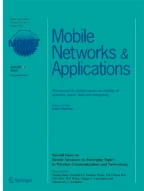1100Accesses
Avoid common mistakes on your manuscript.
Artificial Intelligence, as the name suggests, is imparting intelligence to the machines so that the machines operate like human beings. AI is that sector in computer science that emphasizes the creation of intelligent machines that work, operate and react like human beings. Over the past 60 years, Artificial intelligence technology has made important breakthroughs in algorithms, computing power and calculation materials, which is in the technical transition from "unusable" to "usable". And there’s still a long way from "usable” to “skilled" in the future with the rapid development of society and economy.
This special issue aims to collect research studies on the advances in the field of computing and artificial intelligence. Based on a rigorous and double-blind peer review process, 7 papers were included in this special issue.
The bottleneck that restricts the further development and application of the whole machine learning is the selection of suitable machine learning algorithm and the determination of suitable algorithm hyper-parameters. In Paper [1], a technical manual was formed, which can be easily searched by researchers with summarizing related hyper-parameter optimization methods and proposing the corresponding algorithm framework.
Fuzzy optimization was explored in Paper [2]. In order to improve the ability of quantitative evaluation of e-commerce advertising click rate, a model of e-commerce advertising click rate evaluation based on fuzzy genetic algorithm is proposed. Results show that this method has better adaptability, higher accuracy and better convergence.
Paper [3] proposed the fuzzy c-means clustering image segmentation algorithm based on Hidden Markov model, which effectively solve the poor anti-jamming effect of traditional method. This algorithm has good segmentation effect with smooth segmentation boundary, little influence of image noise and strong robustness.
The traditional RRT algorithm used to control the position of the legged robot synchronously is with poor adaptability and easy to be disturbed by the surrounding environment, which leads to the low stability of the robot when avoiding obstacles, thus Paper [4] propose the position synchronization control algorithm of the legged robot based on DSP centralized control. It has the advantages of high control efficiency, high robustness and small error, which ensures the stable operation of the robot.
The current data dynamic migration algorithm ignores the attribute characteristics of data in the process of data layout, which leads to more iterations of data in perceptual virtual network, longer downtime of dynamic migration and lower migration efficiency. To solve this problem, a dynamic migration algorithm of perceptual data in virtual network based on machine learning is proposed in Paper [5], which effectively reduce the number of iterative replication rounds, shorten the downtime of dynamic migration, and improve the efficiency of virtual network migration in the environment of high dirty page rate and low dirty page rate.
Paper [6] focuses on the parameter setting using the improved algorithm in inverse kinematics. By analyzing the process of whether can the robot legs arrive at the expected positions from different initial positions, the parameter value range is determined. This can provide theoretical basis for optimizing the leg motion of biped robot and developing the related prototype.
Paper [7] proposes a light SZ compressor with a maximal compression ratio based on the U-Net architecture, which will maximize Internet of Things (IoT) devices’ lifetime by deploying data reduction techniques on IoT nodes to reduce data transmission. This optimize the trade-off between compression ratio and data distortion when using a lossy compressor.
References
Zhang X, Li Y, Li Z (2022) Comparative Research of Hyper-Parameters Mathematical Optimization Algorithms for Automatic Machine Learning in New Generation Mobile Network. Mob Netw Appl.https://doi.org/10.1007/s11036-022-01913-x
Song P, Chen C, Zhang L (2022) Evaluation Model of Click Rate of Electronic Commerce Advertising Based on Fuzzy Genetic Algorithm. Mob Netw Appl.https://doi.org/10.1007/s11036-022-01916-8
Xu R (2022) Fuzzy C-means Clustering Image Segmentation Algorithm Based on Hidden Markov Model. Mob Netw Appl.https://doi.org/10.1007/s11036-022-01917-7
Ma L (2022) Position Synchronization Control Algorithm of Legged Robot Based on DSP Centralized Control. Mob Netw Appl.https://doi.org/10.1007/s11036-022-01914-w
Bi C (2022) Dynamic Migration Algorithm of Virtual Network Aware Data Based on Machine Learning. Mob Netw Appl.https://doi.org/10.1007/s11036-022-01915-9
Jing C, Zheng J (2022) Improved Algorithm for Solving Inverse Kinematics of Biped Robots. Mob Netw Appl.https://doi.org/10.1007/s11036-022-01912-y
Azar J, Tayeh GB, Makhoul A et al (2022) Efficient Lossy Compression for IoT Using SZ and Reconstruction with 1D U-Net. Mob Netw Appl.https://doi.org/10.1007/s11036-022-01918-6
Author information
Authors and Affiliations
Xi’an University of Technology, Xi’an, 710048, China
Yanxiao Liu
- Yanxiao Liu
You can also search for this author inPubMed Google Scholar
Corresponding author
Correspondence toYanxiao Liu.
Additional information
Publisher's Note
Springer Nature remains neutral with regard to jurisdictional claims in published maps and institutional affiliations.
Rights and permissions
About this article
Cite this article
Liu, Y. Special Issue on Artificial Intelligence and Technology: Trend, Challenges, and Opportunities.Mobile Netw Appl27, 926–927 (2022). https://doi.org/10.1007/s11036-022-01982-y
Published:
Issue Date:
Share this article
Anyone you share the following link with will be able to read this content:
Sorry, a shareable link is not currently available for this article.
Provided by the Springer Nature SharedIt content-sharing initiative
